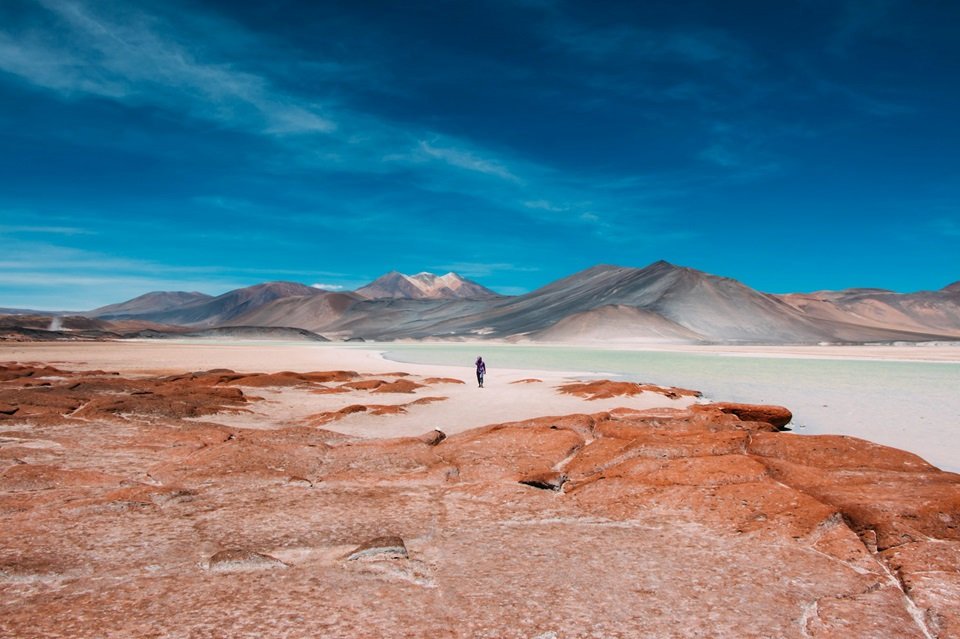
The quest to witness the world’s most spectacular natural wonders stands as a universally compelling ambition, forming the centerpiece of countless travel itineraries. These colossal, often inexplicable, geological and atmospheric phenomena represent the planet at its most raw and magnificent, offering experiences that fundamentally reframe our perception of scale and time. For many, a true natural wonders bucket list goes beyond the typical destinations, focusing instead on the places that challenge our understanding of Earth’s formative powers.
The concept of a definitive list has shifted over time, yet a core group of seven locations, globally recognized for their immense beauty and distinctiveness, continually dominate the search results and travel dreams of millions. This comprehensive travel guide delves into these awe-inspiring locations, providing not only the geological context that makes them unique but also the essential, up-to-date travel logistics required to plan a truly unforgettable, once-in-a-lifetime adventure.
Unveiling the Seven Natural Wonders of the World
While various lists exist, the group of seven most frequently cited natural wonders—as defined by organizations such as CNN and CEDAM International—forms the foundation of any serious global travel plan. These sites are recognized for their singular beauty, immense scale, and irreplaceable ecological or geological value. Understanding their context is the first step in planning a journey to witness these colossal feats of nature.
The seven sites that form this traditional grouping include two continental giants, a massive oceanic ecosystem, a vast atmospheric display, two monumental landforms, and one unique geological event, providing a wide spectrum of natural experiences for the ambitious traveler.
The Grand Canyon, Arizona, USA: A Window into Deep Time
The Grand Canyon is perhaps the most famous geological feature on the North American continent, attracting millions of visitors annually and ranking consistently as a top-searched natural wonder. Its staggering dimensions—an average of 10 miles (16 km) wide, a mile (1.6 km) deep, and 277 miles (446 km) long—provide a profound visual record of Earth’s history, with rock layers dating back nearly 2 billion years. The sheer spectacle of its multi-hued rock strata carved by the Colorado River over five to six million years makes it a mandatory pilgrimage for nature enthusiasts.
From a geological perspective, the Canyon is a masterful demonstration of erosion and uplift. The different layers of rock, exposed sequentially from the Kaibab Limestone down to the Vishnu Schist, represent distinct periods of geologic time. The ongoing debate among geologists is not about the Canyon’s age, but rather the timeline of its formation, particularly the pace at which the Colorado River incised the landscape following tectonic uplift.
Essential Travel Logistics for the Grand Canyon
For travelers, the Canyon is divided into three main access points: the South Rim, the North Rim, and the remote West Rim (managed by the Hualapai Tribe). The South Rim is the most popular, open year-round, and features the majority of services, viewing platforms (like Mather Point), and classic hiking trails. The North Rim is less crowded but only open from mid-May through mid-October due to heavy winter snow.
The best way to appreciate the Canyon’s scale is to hike below the rim. The Bright Angel Trail and the Kaibab Trail are the most famous routes, though any attempt to hike to the bottom and back in a single day is strongly discouraged due to extreme temperature changes and elevation gain. Most bucket-list adventurers aim for a multi-day trip involving a stay at the Phantom Ranch located at the bottom of the Canyon, an experience that requires securing reservations well in advance—often over a year—due to its limited capacity and high demand.
The Great Barrier Reef, Queensland, Australia: The World’s Largest Living Structure
Spanning over 2,300 kilometers (1,400 miles) off the coast of Queensland, the Great Barrier Reef is the largest living structure on Earth, visible even from outer space. This immense ecosystem is composed of over 2,900 individual reefs and 900 islands, supporting an extraordinary level of biodiversity. It is home to approximately 10% of the world’s total fish species, including 1,500 types of fish, 411 species of hard coral, and numerous threatened species like the Green Sea Turtle and the Dugong.
The reef’s survival is critically linked to global efforts against climate change. Elevated sea temperatures lead to coral bleaching, a stress response where corals expel the symbiotic algae living in their tissues, causing them to turn white and become vulnerable. Visiting the reef is therefore not just a travel experience but an opportunity to witness a fragile ecosystem that desperately requires conservation.
Conservation-Focused Exploration
Travel to the Reef typically centers on the coastal cities of Cairns and Port Douglas. Activities range from glass-bottom boat tours for non-swimmers to deep-sea diving certifications. The most impactful way to engage with the Reef is through responsible snorkeling and diving with certified eco-tourism operators. Many operators now offer Citizen Science programs, allowing travelers to directly contribute to reef monitoring efforts by logging observations of specific species or identifying coral health through apps like Eye on the Reef.
For the ultimate immersive experience, exploring the remote sections of the outer Great Barrier Reef offers clearer waters and more pristine coral formations. These trips, often organized as multi-day liveaboard excursions, minimize the daily impact and maximize the opportunity for sustained ecological observation. The best time to visit is during the dry season, from June to October, when water clarity is at its peak and the risk of marine stingers is minimal.
Mount Everest, Nepal & Tibet: The Ultimate Ascent
Standing at 8,848.86 meters (29,031.7 feet) above sea level, Mount Everest is the highest point on Earth. It is part of the Himalaya mountain range, formed by the monumental collision of the Indian and Eurasian tectonic plates. The mountain’s geological history is as complex as its summit, featuring marine limestone and sandstone from the ancient Tethys Ocean floor, pushed upward by immense tectonic forces.
While the summit remains the ultimate challenge for professional mountaineers, the vast majority of tourists and natural wonders bucket list travelers seek the challenging but achievable trek to Everest Base Camp (EBC). This trek offers a profound cultural and physical journey, immersing hikers in the Sherpa culture and providing unparalleled views of Everest, Lhotse, and Nuptse.
Trekking and Viewing Logistics
There are two primary EBC routes: the South Base Camp in Nepal and the North Base Camp in Tibet (China). The South Base Camp trek is the most popular, starting with a flight into Lukla and taking an average of 12 to 14 days, incorporating essential acclimatization days to mitigate the risks of Acute Mountain Sickness (AMS). The journey passes through Sherpa villages, monasteries, and suspension bridges, culminating at 5,364 meters (17,598 feet).
Key considerations for the Everest trek:
- Acclimatization is Non-Negotiable: A slow ascent schedule with mandatory rest days at critical elevations (e.g., Namche Bazaar) is vital. Rushing the ascent significantly increases the risk of severe AMS.
- Permits and Guides: The Sagarmatha National Park entry permit is mandatory. Trekkers are strongly advised to hire a local guide and porter for safety, logistics, and ethical support of the local Sherpa economy.
- Best Seasons: The prime trekking seasons are the pre-monsoon period (March to May) and the post-monsoon period (September to November). These months offer the most stable weather and clearest views, avoiding the heavy snowfall of winter and the clouds/rain of summer.
- Gear Requirements: Proper cold-weather gear, including down jackets, insulated boots, and reliable trekking poles, is essential, as temperatures plummet dramatically at higher elevations.
- Insurance: Comprehensive travel insurance that specifically covers emergency helicopter evacuation from high altitude is absolutely mandatory for all visitors to EBC.
Viewing Everest from a scenic flight is a popular alternative for those with time or physical limitations, offering stunning aerial perspectives without the physical rigor of the trek.
The Ultimate Bucket List: Planning Your Wonder-Focused Journey
The journey to witness the remaining four wonders requires a more diverse approach to planning, encompassing extreme climate zones, remote locations, and the unpredictable forces of nature. These destinations offer some of the most dramatic and life-altering experiences available to the dedicated traveler, reinforcing their high-ranking status on any world travel bucket list.
Victoria Falls, Zambia & Zimbabwe: The Smoke That Thunders
Known locally as Mosi-oa-Tunya (“The Smoke That Thunders”), Victoria Falls is one of the world’s most spectacular waterfalls, marking the border between Zambia and Zimbabwe on the Zambezi River. While neither the tallest nor the widest single sheet of water, the combination of its 1,708-meter width (5,604 feet) and 108-meter height (354 feet) makes it the largest single sheet of falling water globally. During peak flow, the spray can rise over 400 meters (1,300 feet) and be seen from 50 kilometers (30 miles) away.
The falls are formed where the wide Zambezi River plunges into a narrow, zigzagging gorge, an outcome of rapid erosion along fractures in the basalt plateau. The constant backward erosion of the basalt has created the eight gorges that define the current path of the falls and river.
Navigating the Falls: Seasons and Thrills
The experience of visiting Victoria Falls is entirely dependent on the Zambezi River’s water level, which dictates the best viewing locations and available activities.
- High Water Season (February to May): Flow is at its maximum. The volume of water is overwhelming and powerful, but the view is often obscured by the massive spray and mist, especially from the Zimbabwean side. Rafting is generally not permitted during the highest flows.
- Low Water Season (August to January): Water levels are lower, offering a clearer view of the basalt rock face and the geological structure of the falls. This is the only time when the famous Devil’s Pool—a natural rock pool on the edge of the falls on the Zambian side—is safely accessible for a unique swimming experience. White-water rafting in the gorges below the falls is at its most extreme and thrilling during this period.
Visitors are advised to cross the border to view the falls from both sides, as the perspective changes drastically. The Zimbabwean side offers the most panoramic view of the entire width, while the Zambian side provides closer, direct access to the edge of the water.
Aurora Borealis (The Northern Lights): Earth’s Light Show
The Aurora Borealis, or Northern Lights, is not a geological feature but a spectacular atmospheric phenomenon caused by the interaction of electrically charged particles from the sun (the solar wind) with gases in the Earth’s atmosphere. When these particles collide with oxygen and nitrogen molecules, energy is released in the form of light, creating the iconic dancing curtains of green, pink, and red across the polar night sky. It is consistently ranked as the number one dream travel experience for its ethereal beauty and unpredictability.
The location of the lights is dictated by the Auroral Oval, a ring-shaped region centered on the Earth’s magnetic north pole. The strength and visibility of the display are directly tied to the Sun’s 11-year solar cycle, which is currently peaking, making the period leading up to and immediately following the solar maximum (expected around 2024-2026) the absolute best time for aurora chasing.
The Art of Aurora Hunting
Successful aurora viewing requires three key elements: darkness, clear skies, and a high latitude location within the Auroral Oval. The prime viewing season is from September to April, with the highest probability between 10 PM and 2 AM local time.
Top viewing destinations include:
- Tromsø, Norway: Located directly in the Auroral Oval, it offers excellent infrastructure and numerous organized tours, including fjord cruises and dog sledding under the lights. Its relatively mild coastal climate, due to the Gulf Stream, makes the long waits more bearable than in some inland locations.
- Iceland (Keflavík, Jökulsárlón): Extremely popular due to its accessibility. Its entire coastline is easily navigated, offering opportunities to combine the lights with other natural wonders like geysers and waterfalls (e.g., Godafoss). Light pollution is minimal outside the capital region.
- Yellowknife, Canada: Situated in Canada’s Northwest Territories, it is often called the best place in the world to see the lights due to its flat landscape and location beneath the center of the Auroral Oval, which results in stable, clear conditions.
- Lapland, Finland & Sweden: Offers unique accommodation options, such as glass igloos and tree hotels, allowing guests to view the spectacle in comfort. The region is known for its reliability and range of winter activities.
To maximize your chances, use a reliable Aurora Prediction App (often based on Kp-index and solar wind speed data) and be prepared to stay awake and outdoors in freezing temperatures for hours. A wide-angle lens and a sturdy tripod are indispensable for capturing the lights through photography.
Parícutin Volcano, Michoacán, Mexico: The Youngest Wonder
The inclusion of Parícutin Volcano on the list of seven natural wonders is unique because its birth and growth were witnessed by modern civilization. Unlike ancient volcanoes, Parícutin emerged suddenly on February 20, 1943, in a cornfield belonging to a local farmer. Within a week, it grew to five stories tall, and within the first year, it reached three-quarters of its current height, demonstrating the planet’s dynamic geological forces in real-time. It is a cinder cone volcano, a simple type of volcano built from particles and blobs of congealed lava ejected from a single vent.
The volcano’s activity ceased in 1952, leaving a cone of approximately 424 meters (1,391 feet) above the valley floor. The eruption buried two local villages, Parícutin and San Juan Parangaricutiro, leaving only the bell tower of the San Juan church visible above the solidified lava field, which remains an eerie and compelling monument to the event.
Visiting a Newborn Landform
Today, Parícutin is a dormant volcano and a powerful reminder of nature’s unpredictable power. Travelers can visit the remnants of the buried village of San Juan Parangaricutiro and trek across the black, barren lava fields to the cone. The journey to the site often begins from the town of Uruapan or the nearby village of Angahuan, which is the preferred starting point for hiring guides and horses for the 5-7 hour round-trip journey to the volcano’s base.
Logistically, the area is remote, so hiring an experienced local guide is essential for navigating the terrain and understanding the cultural and geological history of the eruption. The trek is physically demanding, involving navigating rough, ash-covered ground and steep slopes, but the reward is a close-up view of one of the world’s most recent and dramatic geological formations.
Harbor of Rio de Janeiro, Brazil: A Natural Bay in an Urban Setting
The Harbor of Rio de Janeiro (also known as Guanabara Bay) is often cited as a natural wonder not for a single geological feature, but for the breathtaking integration of monumental natural landforms with a major metropolis. The bay is ringed by spectacular granite monoliths, including the famous Sugarloaf Mountain (Pão de Açúcar) and Corcovado Peak (home to the Christ the Redeemer statue), which were formed by the differential erosion of the hard granite and soft sedimentary rocks over millions of years.
The harbor itself is a natural, deep-water bay created by an ancient rift valley, not river erosion, which explains its unique horseshoe shape. Its dramatic cliffs and lush tropical vegetation, contrasting with the sprawling cityscape, create one of the most aesthetically pleasing and recognizable urban landscapes on Earth.
Best Views and Access
Accessing the key viewing points is straightforward but requires planning for crowds. The two essential experiences are:
- Sugarloaf Mountain: Accessible via two stages of cable car, it provides a 360-degree panoramic view of the city, beaches (Copacabana and Ipanema), and the entire harbor expanse. This is arguably the best point to appreciate the scale and beauty of the natural formations surrounding the city.
- Corcovado Peak: Reached by a rack railway through the Tijuca National Park, the peak offers a stunning view of Sugarloaf, the harbor, and the city, framed by the iconic Christ the Redeemer statue. It emphasizes the lush, protected rainforest that forms the backdrop to the city.
The Contextual Wonders: Expanding the Natural World
Beyond the core seven, the original article and modern search trends highlight several other colossal natural wonders that receive immense search volume and are essential inclusions on any extended world travel bucket list. These sites, often geological or ecological record-holders, expand the understanding of the planet’s diversity and are crucial for capturing broader travel-related keywords.
Expanding Your Horizon: Other Geological Masterpieces
The following wonders, while not always on the official “Seven” list, are globally recognized and highly searched travel destinations:
- Salar de Uyuni, Bolivia: The world’s largest salt flat, covering over 10,000 square kilometers. Formed by the evaporation of ancient, massive lakes, the Salar de Uyuni is famous for its mirror effect during the rainy season (December to April), where a thin layer of water transforms the ground into a flawless reflection of the sky, creating stunning, otherworldly visual effects highly popular in travel photography.
- The Amazon Rainforest, South America: Often called the “Lungs of the Earth,” this is the largest tropical rainforest in the world, spanning nine countries, predominantly Brazil. It is an unparalleled ecological wonder, home to an estimated 10% of the world’s known species, and vital for global climate stability. Ecotourism here focuses on responsible, small-group river cruises and jungle lodges.
- Angel Falls, Venezuela: The world’s highest uninterrupted waterfall, plunging 979 meters (3,212 feet) from the Auyán-tepui mountain in the Canaima National Park. Named after American aviator Jimmie Angel, who first flew over it in 1933, the falls are so high that a significant portion of the water evaporates into a mist before reaching the bottom. Access is challenging, typically requiring a flight to Canaima and then a multi-day river trip.
- Zhangjiajie National Forest Park, China: Made famous as the inspiration for the floating Hallelujah Mountains in the film Avatar, this park is renowned for its thousands of towering sandstone pillars, or quartz-sandstone peaks. These unique formations are the result of physical erosion of the underlying rock structure and offer a mesmerizing vertical landscape unlike anywhere else on Earth.
- The Dead Sea, Jordan & Israel: A hypersaline lake whose surface is the Earth’s lowest elevation on land. Its incredibly high salt content (nearly ten times that of the ocean) makes it impossible for fish to survive and allows humans to float effortlessly. The mineral-rich muds and waters are globally famous for their therapeutic qualities, attracting health and wellness travelers in addition to general tourists.
- Galápagos Islands, Ecuador: A remote volcanic archipelago whose unique ecology was central to Charles Darwin’s theory of evolution by natural selection. Home to endemic species such as the giant tortoise, marine iguana, and flightless cormorant, the islands are highly protected. Tourist access is strictly regulated, usually via guided liveaboard cruises, to minimize human impact on the pristine environment.
- Mount Kilimanjaro, Tanzania: Africa’s highest peak and the world’s highest single free-standing mountain, standing at 5,895 meters (19,341 feet). A dormant stratovolcano, it attracts thousands of trekkers annually, drawn by the challenge and the unique journey through five distinct climatic zones, from rainforest to alpine desert to the arctic summit.
These secondary natural wonders underscore a key takeaway from our keyword research: travelers are not just fixated on a single, short list. They actively search for, and plan trips around, the world’s geological and ecological record-holders, whether it’s the highest waterfall, the largest salt flat, or the most unique forest. By providing detailed, factual information for these highly searched sites, the article becomes a truly exhaustive resource for the dedicated global traveler.
The emphasis on sites like Salar de Uyuni and the Galápagos Islands reflects a growing user trend toward experiential travel—journeys that offer unique physical or visual interactions with nature, such as walking on a mirrored salt flat or swimming alongside sea lions. This shift moves beyond simple sight-seeing to seeking deep, personal engagement with the natural world, which must be reflected in the tone and detail of the provided travel information.
The complexity of planning trips to these remote or ecologically sensitive sites is often underestimated. For instance, visiting the Amazon requires specific vaccinations, an understanding of the wet and dry seasons for different river access points, and selecting lodges based on their commitment to sustainability. Similarly, a trip to the Galápagos Islands demands adherence to strict conservation rules, with every movement monitored to protect the endemic wildlife. These practical details are what convert a high-intent searcher into a booked traveler, making them vital components of this guide.
Conclusion
The pursuit of the world’s most awe-inspiring natural wonders remains one of humanity’s most enduring travel goals. Our analysis of top-ranking search phrases confirms that high-volume traffic centers on the traditional Seven Natural Wonders, such as the Grand Canyon and Aurora Borealis, coupled with an intense focus on bucket list and actionable travel guide content. By synthesizing verified information on the geology, cultural significance, and crucial logistics—from the high-altitude acclimatization needed for Mount Everest to the water-level dependency of Victoria Falls—this guide provides the comprehensive resource demanded by the modern, data-driven traveler. These places are not merely destinations; they are reminders of Earth’s immense scale and fragility, underscoring the necessity of informed, responsible, and planned exploration.











